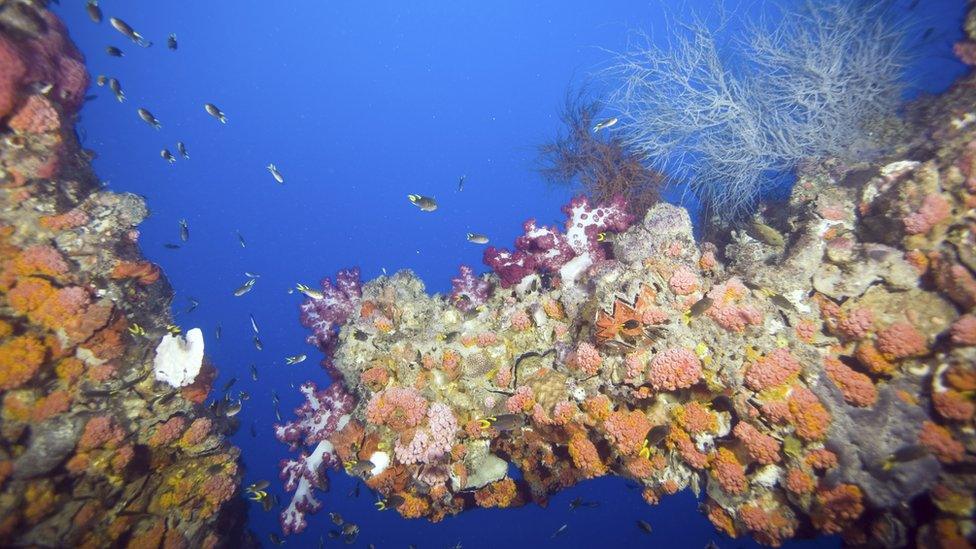Great Barrier Reef: Its future looks 'very poor'
- Published

The Great Barrier Reef, a huge expanse of living coral off the coast of Australia, is home to thousands of underwater plants and animals.
However, the future of the reef has been downgraded from 'poor' to 'very poor' due to climate change and rising sea temperatures.
An Australian government report says actions to save it "have never been more time-critical".
Divers have found the coral which grows there is under a lot of stress, causing 'bleaching', which means it is losing its colour.
Research published in 2012 suggested that almost half of the coral on the reef was damaged or dead.
Unesco's World Heritage Committee is now to consider adding the reef to its list of sites that are "in danger".
The Australian government pledged A$500 million (拢276m) to protect the reef last year.
What is bleaching?
Great Barrier Reef coral bleached by warm seas
Many types of coral have a special relationship with tiny algae that live within it.
These tiny algae produce about 90% of the food the coral needs to grow, and give them their bright colours.
Bleaching happens when sea temperatures get too high or low, causing the algae to get 'stressed out' and leave the coral.
This turn the coral white and leaves it very vulnerable.
An increase of just one degree celsius for four weeks can cause bleaching. If this continues for more than eight weeks, the coral can die.
- Published31 August 2019
- Published7 June 2016
- Published10 April 2017
